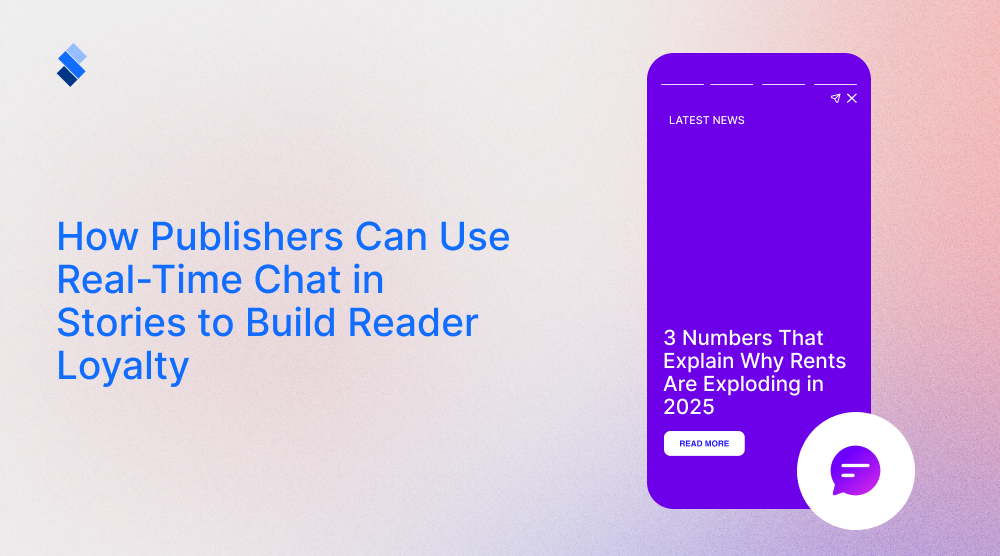How Publishers Are Monetizing Stories with Subscriptions, Ads & Affiliate Links
While there are numerous publisher monetization strategies, subscriptions, ads, and affiliate marketing tend to stand out. Luckily, story content can help with each of them.
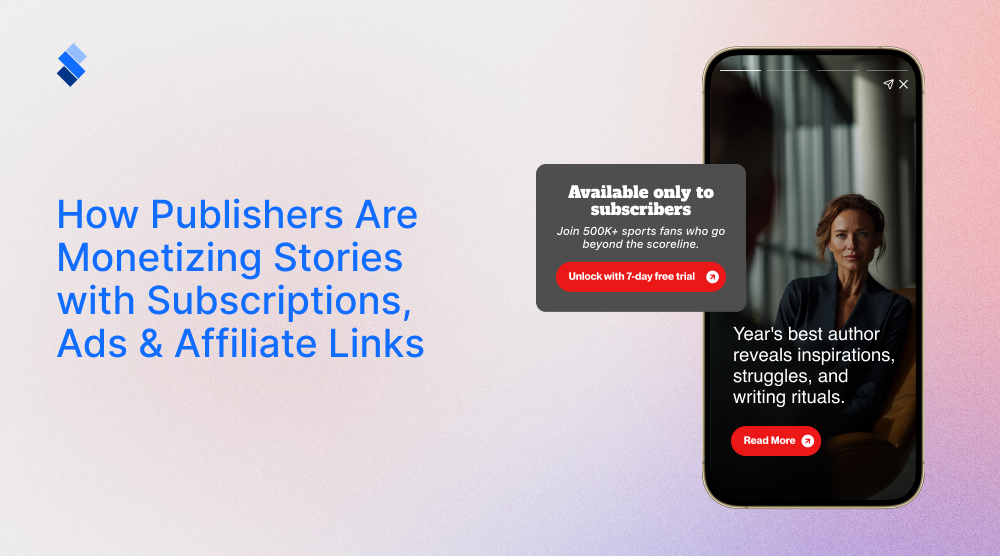
One of the biggest problems for publishers to solve is content monetization. A common misconception is that creating quality content is enough to provide an adequate income, regardless of the type of monetization you opt for. In reality, the choice of monetization will determine how people perceive your content and how willing they are to pay for it. Luckily, story content can be of surprising help in implementing various publisher monetization strategies, especially when the publisher knows how to leverage them. For this article, we will take a closer look at subscriptions, ads, and affiliate links and how they relate to story content.
Subscription
Subscriptions are one of the most commonly used ways for publishers to generate revenue. Here, the key challenge is convincing readers that the content is valuable enough to pay for, while there are available free (or at least somewhat free) alternatives. To do this, publishers use different types of paywalls and engagement techniques to establish themselves as industry leaders whose content is well worth the subscription.
Types of subscriptions
While there are many ways to implement subscriptions, in practice, three are the most common. Metered paywalls, hard paywalls, and the freemium model. Each presents a unique way to approach your audience and outline why subscribing to your content is well worth the money spent.
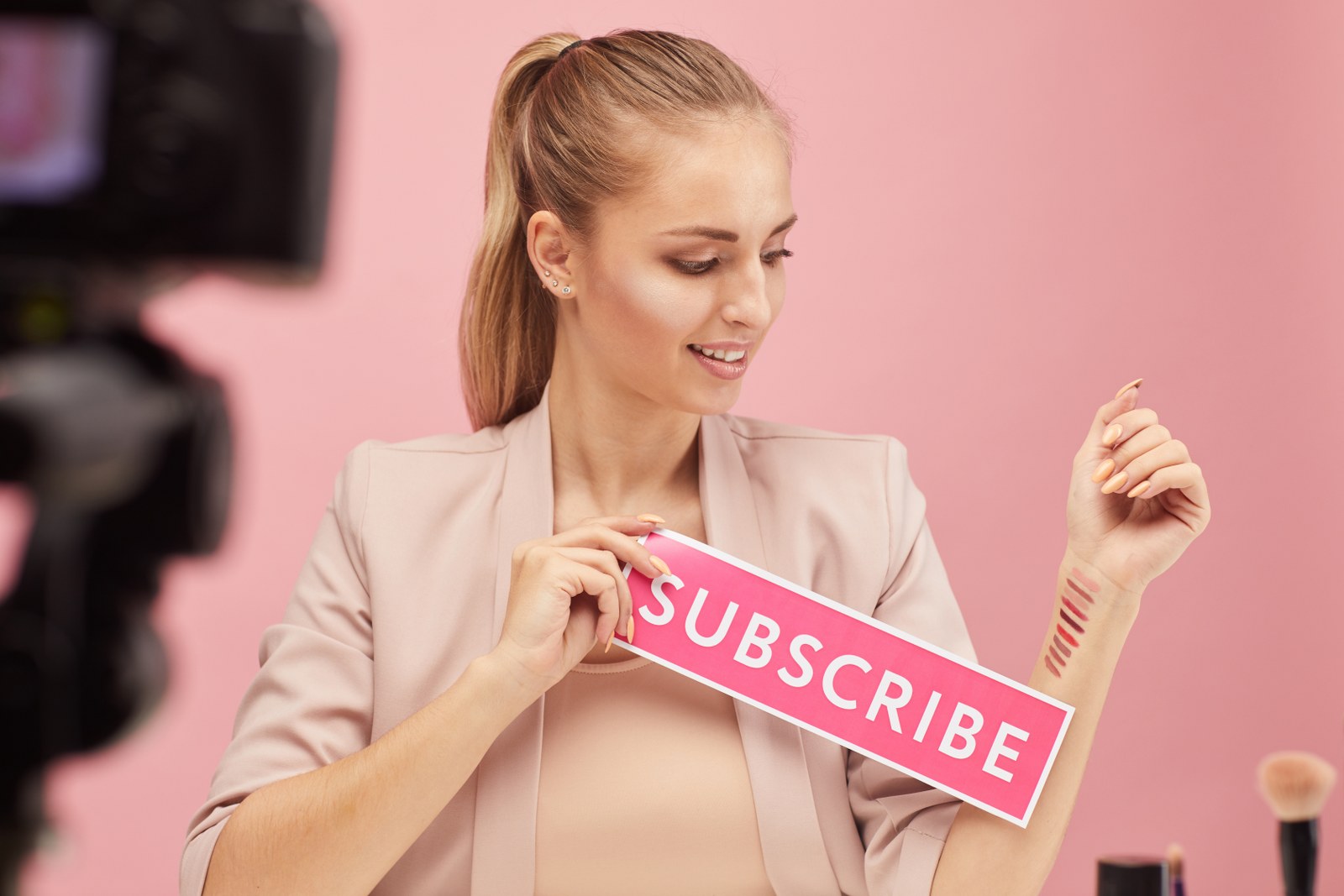
Metered paywall
Metered paywalls work on the premise that readers can access a certain number of articles for free before being asked to subscribe. The New York Times and The Washington Post use this method, allowing a few free articles per month before requiring payment. This gives readers a taste of the content while encouraging them to commit to full access.
This approach reduces resistance to subscription by letting readers sample high-quality content, building trust and familiarity with the publication. The idea is that users who regularly consume free articles may feel inclined to subscribe once they hit the limit. Additionally, metered paywalls leverage the "foot-in-the-door" effect, where small, free engagements increase the likelihood of larger commitments (like subscriptions). By balancing accessibility and exclusivity, they effectively convert frequent readers into paying subscribers while maintaining reach and ad revenue from casual visitors.
Hard paywall
With hard paywalls, almost all content is locked unless the user subscribes. This works best for publishers with highly specialized or premium content, such as The Information or Financial Times, where the audience is willing to pay for exclusive insights. This approach yields the best results when publishers have promoted themselves enough to be considered an authority. People who work within that industry often feel social pressure to subscribe, as not doing so puts them in a group of people who fall behind. The effectiveness of hard paywalls relies on strong brand loyalty, a clear value proposition, and a reader base that views the content as indispensable.
Freemium
The freemium model is a subscription strategy where publishers offer a blend of free and premium content. While anyone can access a portion of the content (typically general news, short articles, or opinion pieces), certain high-value or exclusive materials, such as in-depth reports, expert analysis, long-form journalism, or multimedia features, are placed behind a paywall and are only available to paying subscribers. This model is designed to attract a broad audience by providing ongoing free access, while showcasing the added value of premium content to encourage conversion.
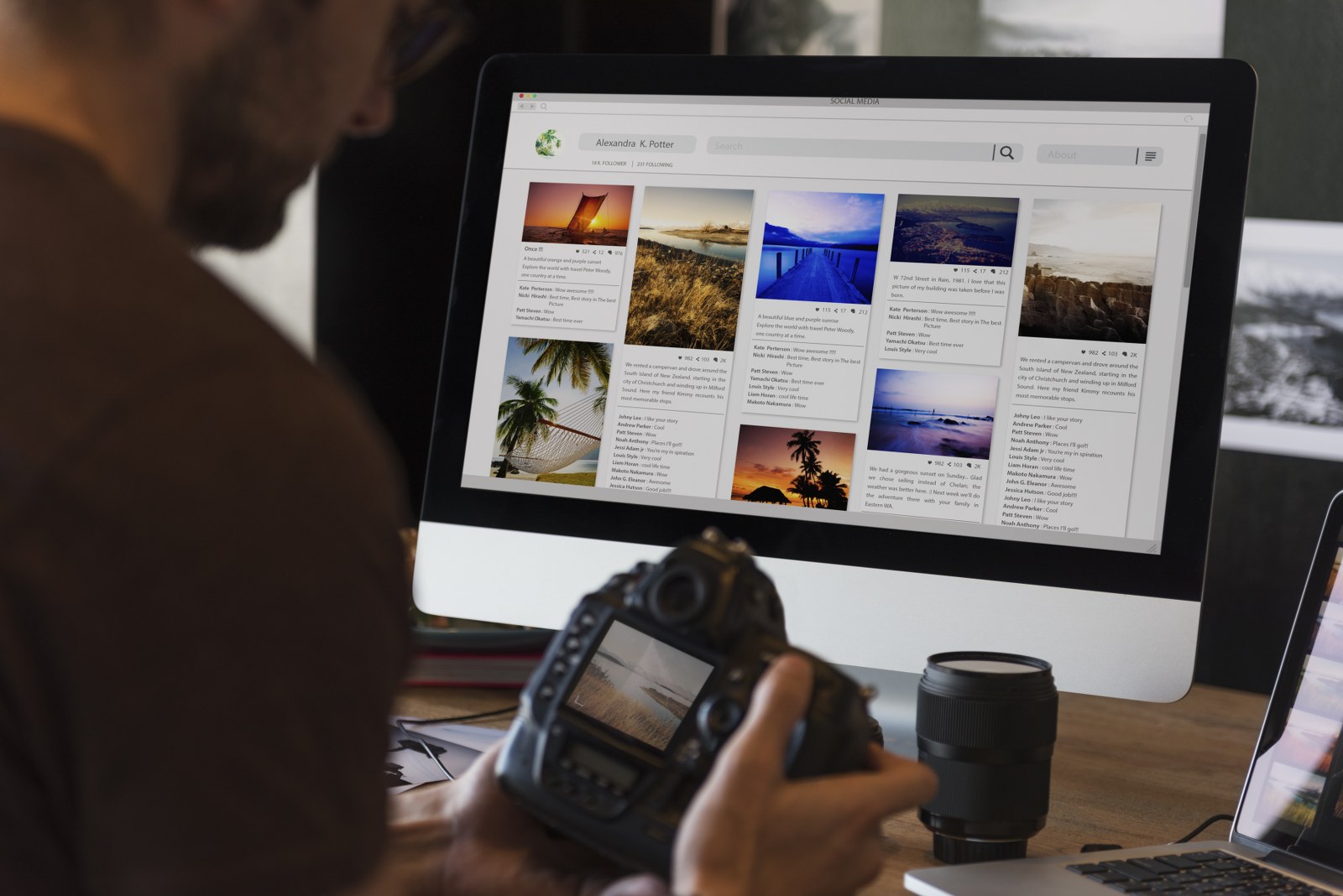
Unlike the metered paywall, which gives readers a set number of free articles per month regardless of the content type (e.g., 3–5 articles before hitting the wall), the freemium model segments content based on quality or exclusivity rather than quantity. This difference shapes reader perception: with freemium, users often view the free content as a public service or entry point, and the premium content as a reward or upgrade for serious readers (more of a "choose your level of engagement" approach). In contrast, metered models can sometimes frustrate users who hit a limit suddenly, even while reading content of mixed value, leading to a perception of artificial restriction.
The freemium model is generally perceived as more transparent and fair, especially when the value of premium content is clearly communicated. It works particularly well for publishers with diverse content tiers and loyal audiences who are willing to pay for depth, access, or ad-free experiences.
Using story content to get subscriptions
As you've likely assumed, different types of subscriptions require different approaches to audience engagement. Luckily, story content can be a valuable tool in all of them, just as long as it is used in the right way.
Giving a glimpse - metered paywall
To optimize a metered paywall, publishers can strategically structure their story content to showcase their best work before the paywall triggers. For example, placing high-impact investigative pieces or exclusive interviews in the free article allowance gives readers a compelling reason to subscribe once they hit the limit. Publishers can also use data to personalize the meter. For instance, frequent readers might see the paywall sooner, while new visitors get more free articles to build trust. Additionally, embedding subtle subscription prompts within free articles (e.g., “This story took 6 months to report. Support our journalism for unlimited access”) reinforces the value before the paywall appears.
Showing authority - hard paywall
For hard paywalls, the key is crafting irresistible previews that convince readers to subscribe before they even start reading. One approach is to get reviews from reputable names within your industry and showcase them on your website. This leverage of UGC builds social proof and helps establish you as an industry authority, thus convincing users to subscribe.

Publishers can tease premium stories with gripping headlines, compelling lead paragraphs, or multimedia snippets (e.g., a provocative chart or video clip) that hint at the depth of the full piece. Some outlets, like The Information, use bullet-point summaries of locked articles to highlight key takeaways, creating FOMO (fear of missing out). Another tactic is offering a one-time “free unlock” of a premium story in exchange for an email signup, which builds a lead funnel for future subscription pitches.
Putting a price on value - Freemium
Engaging story content is a powerful tool for publishers using a freemium model, as it allows them to offer a taste of high-quality journalism while reserving deeper, more exclusive narratives for paying subscribers. By providing some articles for free (such as introductory pieces, trending topics, or time-sensitive news), publishers can attract a broad audience and demonstrate their value. Meanwhile, premium content like in-depth investigations, serialized features, or expert analysis remains behind the subscription paywall, creating a compelling reason for loyal readers to upgrade. This balance of free and paid content nurtures trust and habit, converting engaged readers into subscribers without alienating casual visitors. And by properly using story content, you can showcase the value that the reader will get by becoming a subscriber. In effect, the freemium model, fueled by strategic storytelling, can maximize reach while driving sustainable revenue.
Ads
Along with subscriptions, ads are one of the most common ways for publishers to gain revenue. Even with various alternatives, there is a good reason why advertising remains a core revenue source for most publishers. But the way we use ads has changed significantly over the years. While before publishers could get away with strategically placed banners to trick users into opening them, this is no longer the case. The goal is to maximize earnings without driving readers away with intrusive or excessive ads.
Display ads
One common strategy is placing display ads within articles. These can be traditional banner ads, square ads between paragraphs, or even full-width ads that stretch across the screen. Publishers like BuzzFeed and Vox use these placements to generate revenue while keeping the reading experience smooth. The earnings from these ads depend on factors like audience size and niche. Programmatic ads, which are sold automatically through ad exchanges, typically earn publishers $2 to $10 per thousand impressions (CPM). Direct-sold ads, where brands buy space directly from the publisher, can bring in $15 to $50 CPM or more, especially for premium sites.
Video ads
Another growing trend is video ads, which autoplay as users scroll through an article. These can be short clips, usually 6 to 15 seconds long, placed at natural breaks in the content. Publishers like Forbes and HuffPost use these to boost ad revenue, as video ads tend to have higher engagement rates than static banners. Video CPMs range from $10 to $30, with some high-demand niches fetching even more.

Native ads
Native advertising is also popular, where sponsored content blends in with regular articles. These are often labeled as "sponsored" or "promoted" but are designed to match the site’s editorial style. Outbrain and Taboola are two platforms that help publishers place these recommendations at the bottom of articles, usually under headlines like "You Might Also Like." While the CPM for these ads is lower (often between $0.50 and $5), they can still generate significant revenue due to high volume.
Using story content to improve ads
While ads are widespread, we seldom see publishers use story content to help promote them. And even when they do, it is often a superficial use of the deep functionality that story content provides. So, let's try to fix this.
Engagement through immersion - display ads
Engaging story content creates a more immersive environment for display ads by capturing readers’ attention and increasing time spent on the page. When users are absorbed in a well-written article, they are more likely to notice and interact with adjacent display ads, especially if the ads are contextually relevant to the story. Publishers can leverage storytelling to segment audiences (such as placing travel-related ads alongside adventure journalism or fashion ads within lifestyle features), thus boosting ad relevance and performance. Additionally, premium story content attracts higher-quality traffic, making display inventory more valuable to advertisers and allowing publishers to command better CPMs.
The feel of authenticity - Native ads
Native ads perform best when they blend seamlessly with editorial content, and compelling stories provide the perfect framework for this integration. Publishers can use narrative-driven formats, such as sponsored articles, branded storytelling, or influencer-driven features. These make native ads feel less intrusive and more engaging. For example, a native ad within a serialized business success story might feature a related case study from a sponsor, offering value while maintaining authenticity. Strong editorial content also builds audience trust, making readers more receptive to well-placed native ads that align with their interests, ultimately improving click-through and conversion rates.
Video storytelling - Video ads
Video ads benefit from story content by gaining a captive audience already primed for narrative engagement. Publishers can place pre-roll or mid-roll video ads within long-form stories, documentaries, or episodic content, where viewers are more likely to watch attentively rather than skip. We've already written about how video storytelling can enhance the emotional or suspenseful aspects within a story. This heightens receptivity to video ads, especially if the ad’s message complements the article’s theme, such as a fitness brand’s ad appearing within a health and wellness feature. Additionally, publishers can create custom video ad placements around high-impact stories (e.g., breaking news or exclusive interviews), leveraging heightened reader interest to drive higher viewability and completion rates for advertisers.
Affiliate marketing
Affiliate marketing allows publishers to earn money by linking to products and services within their content. When a reader clicks on one of these links and makes a purchase, the publisher gets a commission. This model works especially well for publishers that review products or create buying guides. Again, there are certain models that have established themselves well and are welcomed by free users and subscribers alike.
"Best of" list
A popular format is the "best of" list, where publishers rank products in a specific category and include affiliate links. For example, Wirecutter, owned by The New York Times, publishes detailed reviews of tech gadgets, home appliances, and other products, earning a commission when readers buy through their links. Amazon’s affiliate program is one of the most commonly used, with commissions ranging from 4% to 8% depending on the product category.
Interactive shopping
Some publishers take this further by creating interactive shopping guides. Instead of just listing products, they might include comparison tools, user reviews, or even videos demonstrating how the products work. TechRadar and Tom’s Guide use this approach, helping readers make informed decisions while earning affiliate revenue. Social media has also become a key channel for affiliate marketing. Publishers like Glamour and Cosmopolitan post shoppable Instagram stories where users can swipe up to buy featured products. Fashion and beauty publishers often earn higher commissions—sometimes 10% to 20%—because these categories have strong conversion rates.
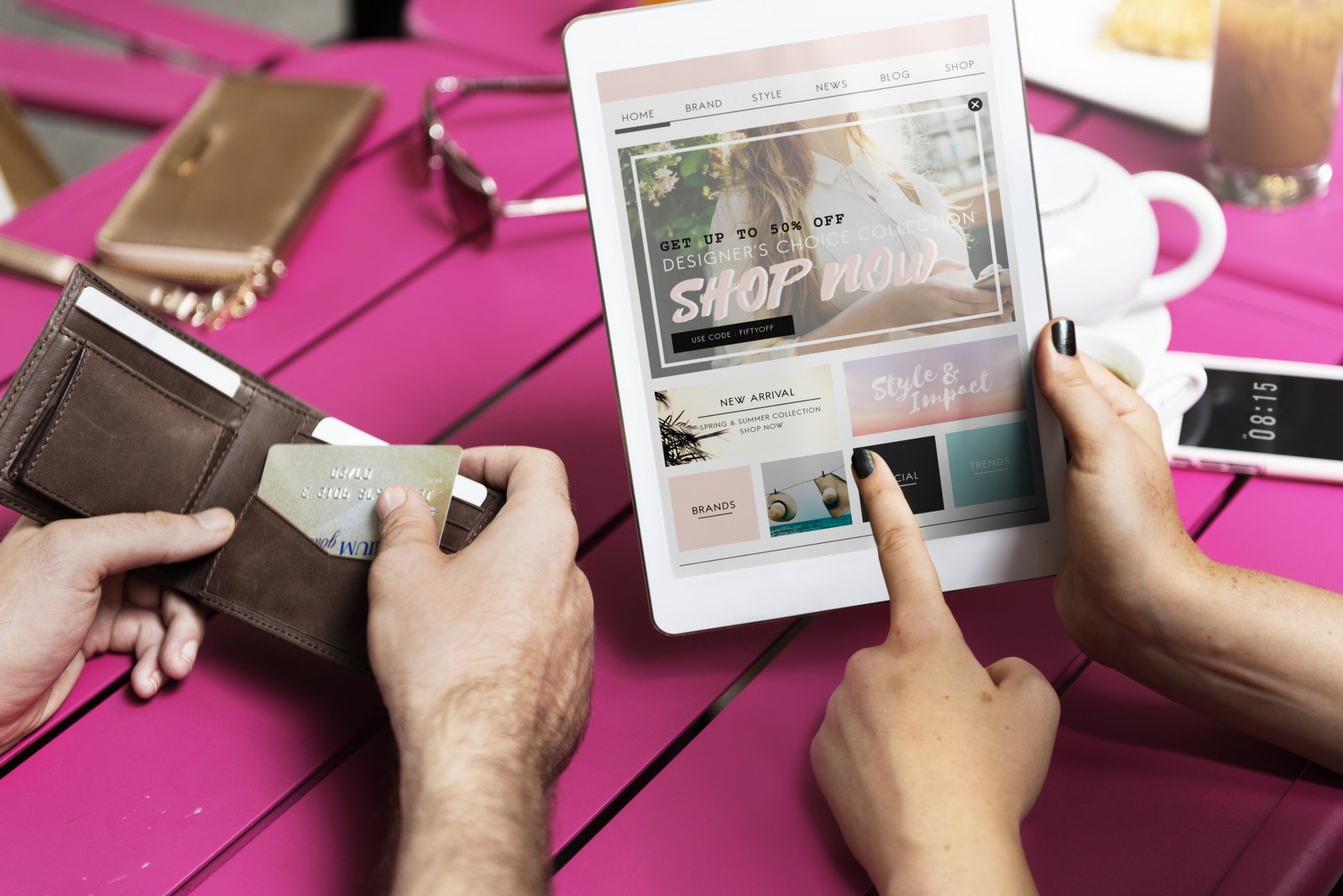
Using story content to improve affiliate marketing
With proper use of story content, affiliate marketing can shine. Due to its engaging, yet not intrusive design, stories are perfect platforms to host and aid affiliate marketing content.
Making products interesting - "Best of" list
Instead of simply listing items, publishers can craft stories around why each product stands out. In-depth reviews, user testimonials, real-world testing scenarios... All this serves to build trust and urgency. For example, a "Best Summer Beauty Products for 2025" article can weave in personal makeup anecdotes, skin-care tips, and side-by-side comparisons, turning a basic roundup into a compelling guide. This approach not only improves click-through rates on affiliate links but also positions the publisher as a trusted curator, increasing the likelihood of conversions. If you manage to naturally embed affiliate links within the narrative, you will create a seamless path from discovery to purchase while maintaining editorial integrity.
Shoppable stories - Interactive shopping
Interactive shoppable stories take affiliate marketing to the next level by allowing readers to explore and purchase products without leaving the content experience. Publishers can integrate clickable hotspots, embedded product carousels, or "Shop the Story" widgets directly into articles, such as a fashion editorial where readers can buy featured outfits or a home decor piece with interactive room setups. This format turns passive reading into active shopping, reducing friction in the buyer journey. For instance, a "Best Tech Gadgets" shoppable story could let users hover over products in an image to see specs, prices, and instant purchase options, driving higher engagement and affiliate revenue. By blending storytelling with instant shopping functionality, publishers create a dynamic, user-friendly experience that maximizes affiliate clicks while keeping audiences engaged.
Final thoughts
Monetizing content effectively requires more than just quality. You need to find a strategic alignment between storytelling and revenue models. Whether through subscriptions (metered, hard paywalls, or freemium), ads (display, native, or video), or affiliate marketing ("best of" lists and shoppable stories), publishers can leverage narrative depth to enhance value perception and drive conversions. Compelling stories build trust, prolong engagement, and create natural opportunities to integrate monetization seamlessly. The key lies in balancing accessibility with exclusivity, ensuring monetization feels less like a barrier and more like a gateway to deeper value. With the right approach, storytelling doesn’t just attract an audience. It turns them into sustainable revenue.
